Media Selection and Content
Media Selection and Account Planning
For advertising, two social networking services were chosen: Facebook and Twitter. The selection decision was based on the availability of media (which determines potential reach), simplicity of use, and feedback capabilities (Levinson, 2014). First of all, Facebook and Twitter are among the most popular social networking services in the world with millions of users. It was expected at the advertising planning stage that most members of the target audience, i.e. persons eligible for joining the club, have access to either or both services. Moreover, it was expected that they check their Facebook accounts or Twitter accounts or both for notifications and updates at least once a day, using social networking for their purposes as well as studying- or profession-related purposes.
Second, advertising media should be simple and convenient for advertisers to post advertisements and for audiences to access them. In this regard, Facebook and Twitter provide vast opportunities, as the content can be easily created, accessed, and shared from anywhere where there is an Internet connection. Finally, it was recognized from the very beginning that an important component of communication in general and advertising in particular in the modern world is feedback. Messages should not be merely conveyed to targets; instead, targets should respond, interact with the advertisers as well as among each other, and thus promote advertising messages and demonstrate their attitudes and needs, which should be taken into consideration by advertisers when creating new content in the future.
For this campaign, accounts were created on Facebook and Twitter to not only convey content to targets but also manage advertising efforts on a higher level by attracting new audiences and managing communication. Managing communication involves constant monitoring of how certain advertisements are received and responded to and reacting to what Facebook and Twitter users have to say about conveyed advertisements. The two selected social networking services are also convenient in terms of tracking progress and success: it is possible to obtain statistics and analytics on how posts are received and promoted (see Results of the Advertising Campaign), which allows evaluating the effectiveness of advertising efforts.
Content
The tagline of the National Society of Leadership and Success (NSLS) is “Empowering, motivating, and inspiring students to their utmost potential.” All the advertisements created and distributed by the NSLS pursue following this pivotal theme. A press release issued on February 7, 2017, guests to the NSLS 2017 Orientation that would feature international guest speakers. A quote by the Brand Manager Daniel Lim was written in a separate block in a different font to be a noticeable part of the press release. It read, “This time of year, we bring new members into an out community that brings exciting new perspectives.”
This is to show that the NSLS does not only have a lot of interesting things it can offer to new members, but it is also interested in what new members can bring to the community. This wording is intended to attract guests by expressing the idea that their perspectives if they are willing to share them, will be highly appreciated. The press release also prompted readers to follow the NSLS in social media and take a look at the Society’s YouTube videos.
Four ads were chosen to be addressed from the content analysis perspective within this advertising summary. The first one is a factual ad (see Appendix 1). It contains the logo of the NSLS, two photographs from the club’s presentations depicting members, a quote, contact information, some factual data, services summary, and a fact written inside a large orange block: “99 % of Society members believe the program is worth the time spent.”
The quote by Jim Rohn reads, “Take advantage of every opportunity to practice your communication skills so that when important occasions arise, you will have the gift, the style, the sharpness, the clarity, and the emotions to affect other people.” This is to emphasize that perfecting communication abilities is one of the advantages that society offers to its members. Factual data include indicating that the Society has 705,824 members nationwide. Services are summarized in one sentence to state that the NSLS provides “benefits of scholarships, exclusive events, insurance, and more.” The ad is to give audiences a general understanding of what the Society is, what it does, why someone could be interested in joining it, and how to contact it for membership.
The second ad is emotional (see Appendix 2). This is to convey the idea that individuals may have a frustration that can be overcome by joining the NSLS. The ad consists of two parts. The first part depicts a young man holding his head in front of a computer with books scattered chaotically on the desk. The man looks frustrated with the overwhelming amounts of studying or work he has to do. The second part, placed beneath the first one, depicts the same man smiling and calmly reading a book at the same desk. There is now the logo of NSLS on his monitor, and the books on his left are organized into neat piles.
Written on the first part of the ad is “Before NSofLS,” and written on the second one is “After NSofLS.” The first part is black and white, while the second one is in color; this is done to strengthen the feeling of frustration the man had before joining the Society and the image of overcoming it after joining. The ad also delivers the same statistics as the factual ad (about the 99 percent of Society members thinking the time at the NSLS well-spent) and an appealing reading, “Feeling hopeless and lost? Gain your spark by joining our community of leaders and scholars.” The ad aims for emotionally appealing to persons who may be overwhelmed by the pressures of studying and pursuing career goals. It is to deliver the message that the NSLS can provide a solution.
The third ad is Valentine’s Day ad (see Appendix 3). It is done in pink, with hearts on it, reading, “JFK once said, ‘Efforts and courage are not enough without purpose and direction[.]’ Cupid agrees. This Valentine’s day, LEAD with your heart, LOVE what you do. NSofLS.” The ad is intended to be somewhat amusing and light to simply remind members and potential members that there is a club that appreciates the values of leadership and success and is devoted to them in everything they do. It is expected that people are likely to be more positive toward organizations that they are part of or organizations that they might join if those organizations congratulate them on holidays, thus personally appealing to them.
Finally, the fourth ad is a collaboration ad (see Appendix 4). It is done in cooperation with Katipunan, a Pilipino student club. The ad features an artwork that combines the logos of the NSLF and the Katipunan club placed against the background of a nebula with a hand reaching for the logo from the bottom of the ad. The text above the logo is, “Aim far beyond the stars[.] We’ll get you there.” This was used to inspire potential users and show that being part of the two clubs provides opportunities for extraordinary achievements.
Roadblocks to reception
In communications, there used to prevail the understanding that messages delivered to masses through channels such as television or newspapers affect individuals directly, prompting to do certain things and adopt particular attitudes or behaviors implied in those messages. However, the understanding has changed toward recognizing that audiences perceive mass communication messages indirectly through a prism of their backgrounds, existing beliefs, and experiences. In today’s world, this recognition went even further.
With the many-to-many model of communication brought by the emergence of social networking services, it is acknowledged that it is not as much that mass communication messages affect people directly or indirectly, but there is an environment where information is constantly generated, shared, and responded to in a way that it is hard to describe the process in linear terms. This is important for communication professionals, including advertisers, to analyze how the content they produce achieves or fails to achieve its goals.
One of the components of the present-day understanding of how mass media works is the concept of roadblocks to the reception. The notion of roadblocks to effective communications was first proposed by Thomas Gordon in the context of family relations (Kimberlee & Coles, 2011). However, it has come since then to be an influential model in communication studies applicable to various spheres, including advertising. The model shows how different aspects of communication can get in the way of delivering messages to audiences as intended.
There are twelve roadblocks described overall and several recommendations to address them. What can be taken into consideration by advertisers is that effective communication is hindered by commanding, threatening, moralizing, judging, and diverting. What should be recognized in the audiences is their autonomy and capability to make own decisions. Respect comes from this recognition. Instead of persuading aggressively or imposing certain behaviors, advertisers should convincingly demonstrate the benefits of doing something they offer (buying a product, supporting a candidate, or joining a student club) and respectfully encourage targets to do it for their good.
However, with social networking services, there are also additional roadblocks to the reception that were not issued for communication practitioners twenty years ago or before. On Facebook or Twitter, users scroll down their feeds, often without intensive attention. To make sure that they even notice a certain ad, advertisers need to make the ad visually outstanding.
This was pursued in the ads described above through the use of colors and images. Second, the content should be succinct, as social media users may not be willing to spend more than ten seconds or so on reading a post. Third, the content should be discussable, i.e. it should leave some space for users to make comments, which will encourage them to share the content. Besides, by reacting to a post, users make it visible to other users among their followers and subscribers. Finally, the messages should be clear and simple because social media do not necessarily imply profound exploration; users are rather willing to consume short and simple pieces of content when they scroll down their feeds. All these considerations were incorporated into planning the designing stages of the advertising campaign for the NSLS.
Results of the Advertising Campaign
Based on the analysis of the statistics generated by Facebook (see Appendix 5), the most successful ad was a post from February 13, 2017, reporting an event organized by the Dean’s Office. The event was a talk held by Mark Rampolla, a former CEO of Zico Coconut Water, who discussed his success in the business world and experiences of “maximizing the impact” (see Appendix 6). The success of the post can be measured quantitatively. First, it reached the largest number of people on Facebook among all the recent posts by the NSLS—32 people (with an average of 16 people per post).
It received three post-click (with an average of 2.9) and six reactions, including comments and shares (with an average of 4.4). From the qualitative perspective, the post was to deliver to the audience the message that the NSLS is devoted to the ideas of success and optimal performance, which is why the talk was an important event for the Society, and the Society wanted to share with its subscribers the value of this event. From this perspective, the post is part of the Society’s effort to attract new members by demonstrating what is important for it.
Measuring awareness and participation is challenging because social networking services’ analytics is hardly capable of analyzing actual attitudes and motivations of users who were reached by particular content or reacted to it. However, it can be assumed that the ad about Mark Rampolla’s talk was successful in terms of raising awareness because it was not concentrated on the NSLS.
Instead of advertising itself, the Society reacted to an event organized by the Dean’s Office to demonstrate that it is interesting for its members to attend meetings on how to make it in the business world and to share it with the audience afterward. The ad’s perceived success is also justified by the fact that there are people in the University who might have attended the talk but are not aware of the NSLS. They can react to the ad, thus becoming potentially interested in other contents generated by the NSLS and in the Society itself. However, to estimate the increase in awareness or participation more reliably, it is necessary to collect feedback from users.
Conclusion
Advertising is a complicated process that should be designed with a large number of considerations. It is not enough to simply put contents out there saying, for example, how something we produce should be bought (for businesses) or how we should be joined (for student clubs). In creating advertisements, the content and delivery should be planned and analyzed according to the audience’s needs and preferences. It is summarized above how the NSLS addressed appropriate media, account planning, contents, and possible communication complications to design the most potentially successful advertisements. Their success was estimated based on analytics provided by social networking services, and the results are deemed satisfactory, although there are still opportunities for growth, as there are more people to reach and persuade to join the club for their benefit as well as the benefit of the NSLS.
References
Kimberlee, R., & Coles, J. (2011). Participatory communication. In B. Oliver & B. Pitt (Eds.), Working with children, young people and families (pp. 69-85). Chicago, IL: Leaning Matters.
Levinson, P. (2014). New new media (2nd ed.). Boston, MA: Pearson.
Appendix 1
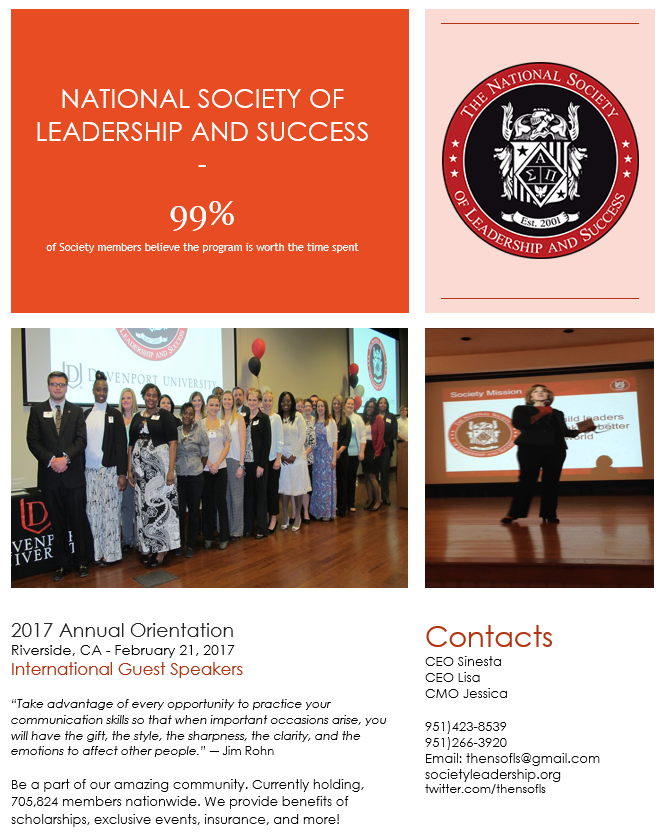
Appendix 2
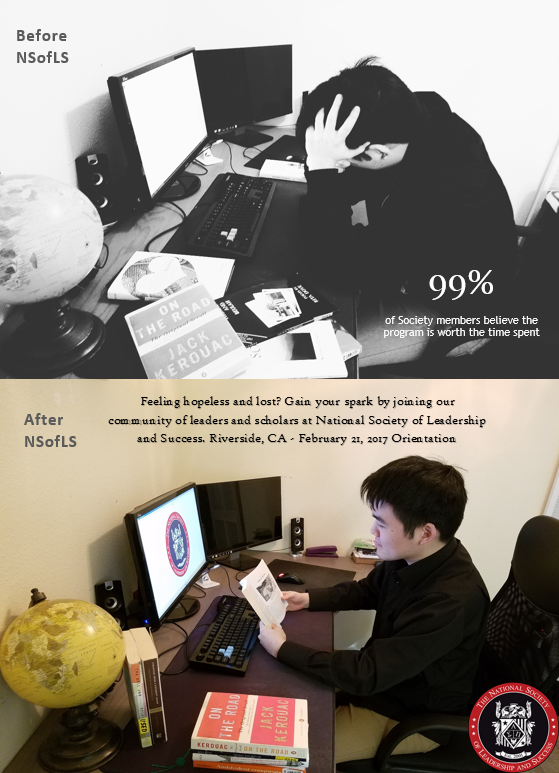
Appendix 3

Appendix 4
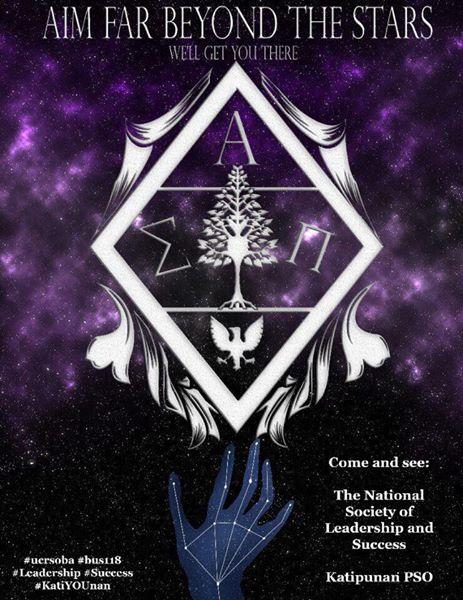
Appendix 5
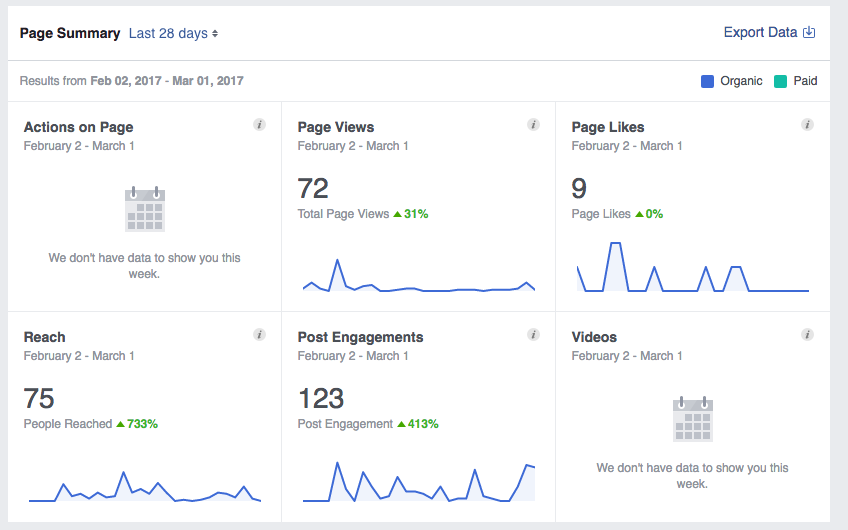
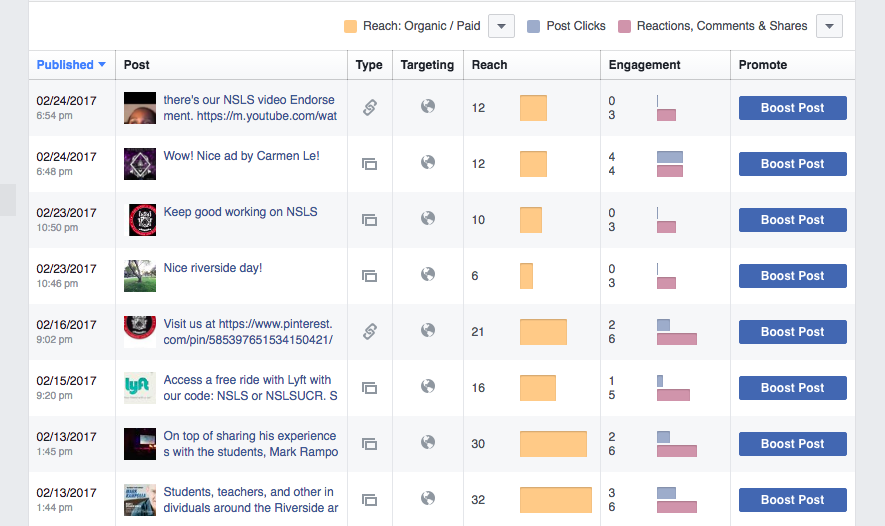
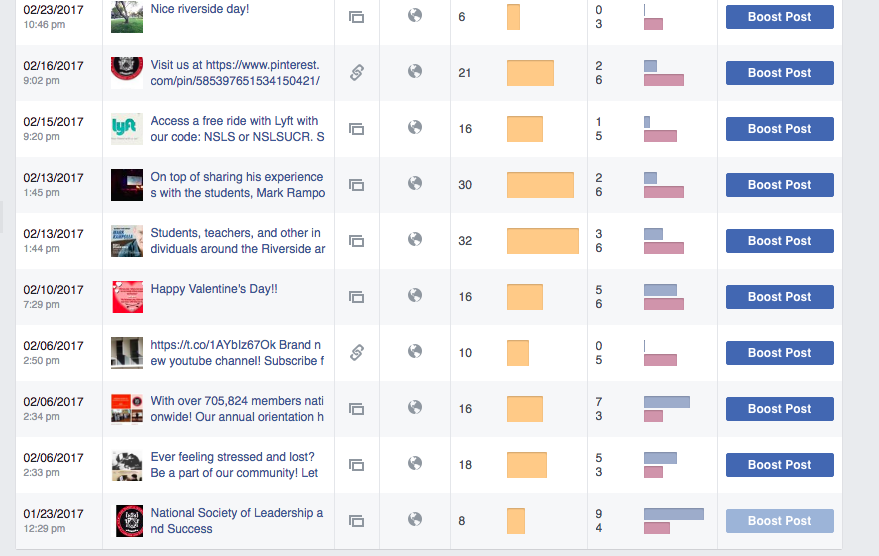
Appendix 6
